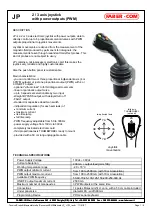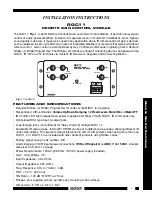
9-26
Cisco Wireless LAN Controller Configuration Guide
OL-8335-02
Chapter 9 Configuring Radio Resource Management
Overriding Dynamic RRM
Using the CLI to Statically Assign Channel and Transmit Power Settings
Follow these steps to statically assign channel and/or power settings on a per access point radio basis
using the CLI.
Step 1
Enter one of these commands to disable the 802.11a or 802.11b/g network:
•
config 802.11a disable
•
config 802.11b disable
Step 2
To specify the channel that a particular access point is to use, enter one of these commands:
•
config 802.11a channel
Cisco_AP channel
•
config 802.11b channel
Cisco_AP channel
Example:
To configure 802.11a channel 36 as the default channel on AP1, enter this command:
config 802.11a channel AP1 36
.
Step 3
To specify the transmit power level that a particular access point is to use, enter one of these commands:
•
config 802.11a txPower
Cisco_AP power_level
•
config 802.11b txPower
Cisco_AP power_level
Example:
To set the transmit power for 802.11a AP1 to power level 2, enter this command:
config 802.11a txPower AP1 2
.
The transmit power level is assigned an integer value instead of a value in mW or dBm. The integer
corresponds to a power level that varies depending on the regulatory domain in which the access points
are deployed. The number of available power levels varies based on the access point model. However,
power level 1 is always the maximum power level allowed per country code setting, with each successive
power level representing 50% of the previous power level. For example, 1 = maximum power level in a
particular regulatory domain, 2 = 50% power, 3 = 25% power, 4 = 12.5% power, and so on.
Note
Refer to the Hardware Installation Guide for your access point for the maximum transmit power
levels supported per regulatory domain. Also, refer to the data sheet for your access point for the
number of power levels supported.
Step 4
Repeat
Step 2
and
Step 3
for each access point radio for which you want to assign a static channel and
power level.
Step 5
Enter one of these commands to enable the 802.11a or 802.11b/g network:
•
config 802.11a enable
•
config 802.11b enable
(To enable the 802.11g network, enter
config 802.11b 11gSupport enable
after the
config 802.11b enable
command.)
















































